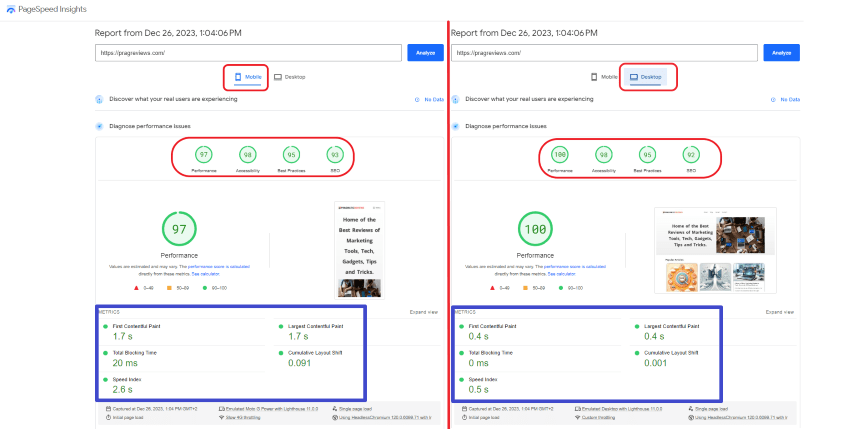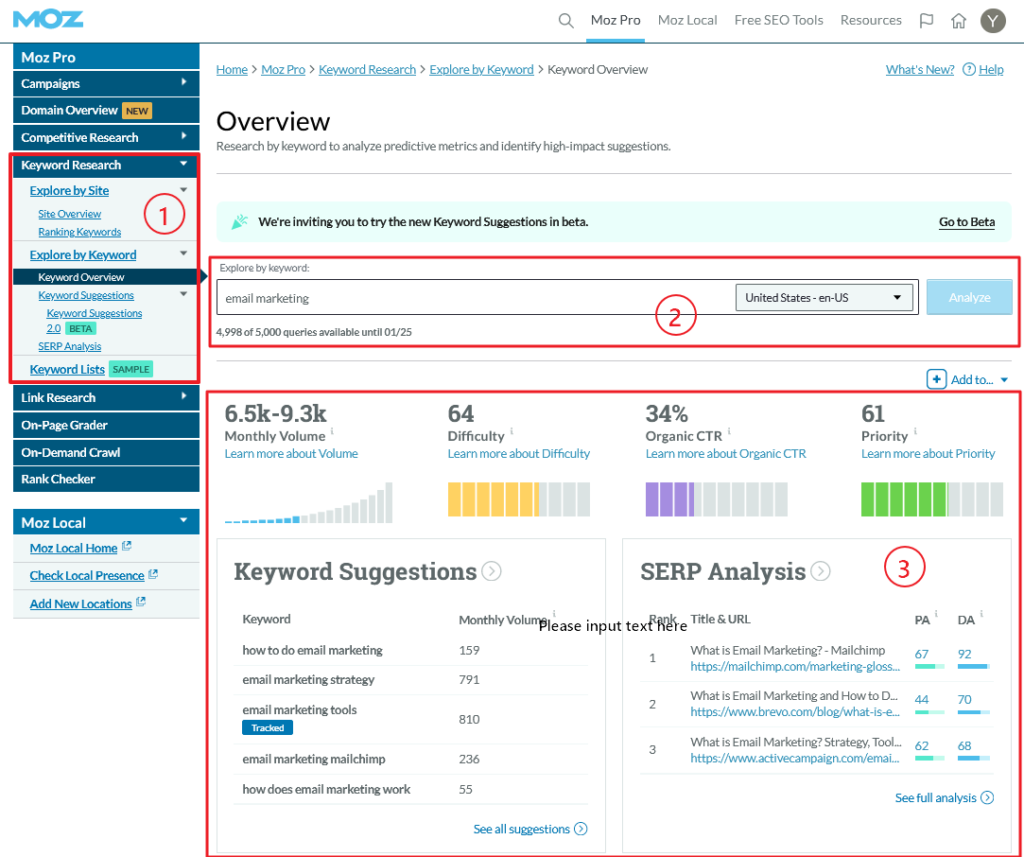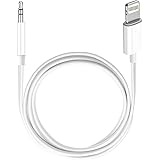Introduction
Your website is the digital storefront of your business. Just like any physical establishment requires regular maintenance to stay in prime condition, so does your online presence. Therefore be mindful of the fact that search engine optimization is not merely about keywords and content; the technical health of your site is a crucial factor that can catapult your rankings in the digiverse.
By honing in on Technical SEO, one of the SEO pillars we briefly discussed in 6 Easy SEO Techniques to Drive Traffic to Your Website, you’re setting the stage to optimize your website and fortify its website health. Given the intricate nature of search engine optimization, understanding and implementing the finer technical elements can sometimes seem daunting. However, it’s necessary for any competitive online strategy.
In the previous two posts, we delved deeper into On-Page SEO – On-Page SEO: Proven Strategies to Skyrocket Your Website’s Ranking (2024) and Backlinks – Backlinks and SEO: How to Boost Your Website’s Ranking. In this post, we will embark on this vital journey to ensure that your website meets the standards of search engines and provides an exceptional experience for your visitors by covering Technical SEO.
By the end of this article, you will have gained the required know-how that will keep you ahead of the curve by placing an unwavering focus on the qualities that make your website not only accessible to search engines but also a beacon of user-friendliness.
Table of Contents
Key Takeaways
- Revitalizing your website’s backend plays a crucial role in enhancing overall website health.
- Employ Technical SEO best practices to optimize your website for both search engines and user satisfaction.
- Audit and refine your site’s technical underpinnings to boost visibility to help your site rise in search engine rankings.
- Bear in mind that understanding Technical SEO is non-negotiable for a robust and strategic online presence.
- Regular and consistent technical check-ups can prevent common SEO pitfalls and safeguard your website’s performance.
Understanding the Pillars of Technical SEO
Website optimization requires a deep comprehension of the different search engine ranking factors that dictate your site’s visibility. A big chunk and aspect of your SEO strategy will center around the essential pillars of Technical SEO. These pillars serve as the foundation upon which search engines give a thumbs up to your website’s relevance and functionality.
The following factors contribute to the core components that are crucial to enhancing your online presence.
- Crawlability: By ensuring search engines can access and read your content without any obstacles.
- Site Structure: Developing a logical architecture that favors both user navigation and search engine discovery.
- Indexing: Enabling accurate and efficient indexing of your website’s pages by search engines.
- Site Speed: Reducing load times to offer a rapid and seamless user experience, which is a direct ranking factor.
- Mobile-Friendliness: Crafting a website that is responsive and accessible across all mobile devices.
- Security: Implementing HTTPS to safeguard user data and earn trust from users and search engines alike.
- User Experience: Providing an intuitive and engaging experience that retains users and reduces bounce rates.
By rigorously and continuously evaluating and optimizing your website in these key areas, you can construct a strong platform that is not merely search-engine-friendly, but also delights your users and keeps them engaged for longer periods of time.
This cohesion between optimization for search algorithms and usability enhancements is the bedrock of a successful Technical SEO strategy. To further elucidate, let us consider a comparative analysis of elements that often require optimization by looking at the common issues to look out for, and quick optimization tips:
| Technical Element | Common Issues | Optimization Tips |
|---|---|---|
| Crawlability | Broken links, faulty robots.txt | Regularly check and fix broken links, fine-tune your robots.txt file |
| Site Structure | Poor navigation, deep page levels | Flatten site hierarchy, use breadcrumb navigation |
| Indexing | Orphaned pages, duplicate content | Create a comprehensive sitemap, utilize canonical tags |
| Site Speed | Unoptimized images, bloated code | Compress images, minify CSS and JavaScript |
| Mobile-Friendliness | Non-responsive design, small clickable elements | Employ responsive design, enlarge touch targets |
| Security | Lack of SSL certificate | Acquire and install an SSL certificate |
| User Experience | Confusing UI, intrusive ads | Streamline the user interface, limit pop-ups and ads |
Remember, the intricacies of Technical SEO are the nuts and bolts that can propel your site to the highs of search engine rankings. A concerted effort to refine these core pillars will pave the way to an authoritative online entity, leaving an indelible mark in the digital universe.
The Role of Site Structure in the Technical SEO Strategy
As you delve deeper into the elaborately complex details of website optimization, you’ll quickly discover that site structure is not just about aesthetics; it’s a significant factor in On-Page SEO. A logical and well-planned site structure enhances your website’s crawlability.
This allows search engines to navigate through your content seamlessly and index your pages more effectively. Let us explore how you can analyze and refine your site’s structure to benefit your SEO strategy.
Analyzing Your Website’s Current Structure
To start, take a critical look at how your website is currently organized by quickly answering these two questions:
- Are your most important pages readily accessible?
- Do they reflect the main themes of your site?
By conducting this analysis, you will have insights into any changes that may be needed to strengthen and boost your site’s performance in search engine results. Consider utilizing tools that create visual sitemaps to assist in this review process.
Best Practices for Site Hierarchy
Maximize website optimization by establishing a clear and concise hierarchy. This will not only help search engines understand the relative importance of your pages but also assist visitors in navigating your site with ease. Implement these best practices:
- Logical categorization: Begin with broad categories and narrow down to more specific subcategories.
- Simplicity in navigation: Ensure that users can find what they need in as few clicks as possible. The general rule of thumb is that “your visitors should be able to reach any page on your website from the home page within 3 clicks“.
- Clear and descriptive URLs that reflect your site’s organization and content.
The golden rule is that simplicity leads to better user and search engine comprehension. Keeping your hierarchy straightforward paves the way for improved search engine rankings.
Internal Linking and SEO
Internal linking does more than just aid in website navigation. It also is a very effective On-Page SEO strategy that distributes authority across your site. By linking to relevant content within your pages, you not only keep users engaged but also allow search engine bots to discover new content via established pages. When performing internal linking:
- Use anchor text that is informative and includes relevant keywords.
- Link to content that provides further value or depth on a topic. One of the best ways to achieve this is by having a post with a broader topic and then writing other posts going into detail about the topics listed which then link to each other.
- Maintain a balance – overly excessive linking can be counterproductive.
Think of internal linking as your site’s road map for both users and search engines. It should make the journey informative and seamless.
Speed Optimization for Better Search Engine Rankings
As you hone your site’s search engine optimization (SEO) strategy, understanding the role of site speed is paramount. It’s not just about providing a swift browsing experience; it’s also a crucial component of website rankings. Fast-loading websites not only heighten user satisfaction but also gain favor with search engines, directly affecting your SEO success.
Evaluating Site Speed Performance
Your first step in speed optimization should be to evaluate your current website performance. Utilize reputable tools such as Google PageSpeed Insights and GTmetrix to gain a comprehensive understanding of where your site stands. These tools will pinpoint performance bottlenecks such as unoptimized images, bloated code, or delayed server responses, offering you a clear path toward site speed improvement.

Tools for Speed Optimization
Once you’ve identified the weak spots, applying the right tools and techniques can make a substantial difference. Look into resources for caching, which store parts of your site for quick retrieval, and explore image compression options to reduce file sizes without sacrificing quality. Don’t overlook code optimization as well; minifying CSS, JavaScript, and HTML can strip away unnecessary characters and comments, resulting in speedier loading times.
Impact of Hosting and Server Configuration
The foundation of your site’s speed can often be traced back to the hosting solution and server setup in place. Choosing a reliable hosting provider and configuring your server correctly can significantly cut down on loading times.
On the hardware side, solid-state drives (SSDs) have become a must-have for their quick data access speeds. Employ a content delivery network (CDN) to distribute your site’s static content around the globe, ensuring faster delivery to users no matter their location. One of the best and most well-known content delivery networks is Cloudflare.
| Aspect | Tool/Technique | Benefit |
|---|---|---|
| Code Minification | HTML/CSS/JavaScript Minifiers | Eliminates unnecessary characters and/or spaces to expedite page load |
| Image Optimization | Image Compressors like TinyPNG or a WordPress plugin like Seraphinite Accelerator (which also acts as a caching tool). | Reduces file size, maintaining visual quality |
| Caching Strategies | Browser/Server Caching Tools | Pre-loads content for quick accessibility |
| Content Delivery | Content Delivery Networks (CDNs) | Distributes load, improving global access speeds |
By addressing these key areas, your efforts in speeding up your website can lead to significant improvements in user experience and search engine standings. Always remember, when it comes to maintaining a competitive edge online, site speed is not just a bonus—it’s a cornerstone of effective search engine optimization.
Mobile Optimization: A Technical SEO Must-Do

As the digital landscape evolves, your Technical SEO strategy must also target and prioritize mobile optimization to meet the demands of modern users. With mobile-first indexing now at the forefront, search engines are reshaping the way websites are evaluated. Ensuring your website’s mobile version is up to par is not just a recommendation—it’s a necessity for online success.
Understanding Mobile-First Indexing
Mobile-first indexing means that Google predominantly uses the mobile version of the content for indexing and ranking. Since the majority of users now access the internet via mobile devices, search engines have adapted to these usage patterns. Your website’s mobile compatibility is now a critical factor influencing your online presence and visibility.
Responsive Design and Mobile Usability
Responsive design is essential in creating a mobile-friendly website. It ensures that your site’s content adapts smoothly to different screen sizes, offering an optimal viewing experience for all users. Steps towards a responsive design include using flexible grids, media queries, and scalable images. Effective mobile usability extends beyond layout; it encompasses navigability, touch-screen readiness, and overall user experience, facilitating engagement and reducing bounce rates.
Improving Mobile Loading Times
Streamlining your website’s performance is especially crucial for mobile users, who often seek quick information on the move. Reducing loading times can be achieved with techniques such as compressing images, leveraging browser caching, and minimizing code. It’s not just about speed; it’s about providing fast and frictionless access to content, which directly impacts customer satisfaction and retention.
| Optimization Technique | Benefits | Implementation |
|---|---|---|
| Responsive Design | Enhanced user experience, improved SEO rankings | Media queries, fluid grids, flexible images |
| Image Compression | Faster loading times, reduced bandwidth usage | Tools like TinyPNG or ImageOptim |
| Browser Caching | Improved page load performance, decreased server load | Setting cache-control headers |
| Minimized Code | Reduced file sizes, increased speed | Minifying CSS, JavaScript, and HTML |
Implementing these mobile optimization strategies is fundamental to your website’s success. Embrace the shift to a mobile-centric approach and ensure that your site rises to meet both search engines’ requirements and your audience’s expectations. Stay ahead in the game by perfecting your mobile user experience, and watch your SEO efforts come to fruition.
Keyword Research for On-Page Optimization

While striving to enhance your website’s presence in search engine results, keyword research becomes critical for successful on-page optimization. This strategic element is integral to aligning your content with what your target audience is actively searching for. Embarking on keyword research is not about guessing—you’ll need to leverage reputable tools that provide actionable data.
To initiate your keyword discovery process, you cannot go wrong with the Google Keyword Planner, a tool designed to aid in finding keywords related to your niche. Paid tools like Moz, SEMrush, and Ahrefs offer a broader spectrum, accommodating not just keyword research but also a wealth of insight into competitors’ strategies. These tools can guide you in identifying keywords that are popular enough to drive traffic and specific enough to attract targeted visitors.
Keyword Selection Criteria:
- Relevance: Ensure keywords are closely related to your website’s content and offerings.
- Search Volume: Opt for keywords with sufficient monthly searches indicating interest and traffic potential.
- Competition: Weigh the competitiveness of keywords, aiming for those with a realistic chance of ranking.
- User Intent: Ascertain the intent behind search queries to tailor your content accordingly.
Once pinpointing the ideal keywords, incorporating them into your website’s content is the next step in on-page optimization. Remember to weave these keywords naturally into titles, headings, meta descriptions, and the body of your text, maintaining readability and providing value to your users. Ultimately, this precise application of keyword research fortifies the foundation of robust search engine optimization practices.
| Keyword | Monthly Search Volume | Competition Level |
|---|---|---|
| Organic gardening tips | 12,000 | Medium |
| Eco-friendly pesticides | 8,500 | Low |
| Urban farming techniques | 5,000 | High |
By thoroughly analyzing the balance between search volume and competition, you position your website to attract the right audience. Now that you have a blueprint to propel search engine optimization through informed keyword research, putting it into action across your on-page content will pave the way toward greater visibility and engagement.
Meta Tags and Their Importance in SEO
Meta tags play a pivotal role in your SEO strategy, serving as a first impression when your page appears in search engine rankings. These snippets of text, though not directly influencing your rank, are instrumental in attracting clicks—a vital user behavior metric that search engines monitor. Understanding and optimizing meta tags are key for boosting visibility and driving targeted traffic to your website.
Let’s dive deeper into how title tags and meta descriptions function:
- Title Tags: They appear as clickable headlines in search results and should be succinctly crafted to capture the essence of the page content, integrating primary keywords.
- Meta Descriptions: These provide a brief and compelling summary of the page content, encouraging users to click through from the search results. Including relevant keywords and a clear call-to-action can increase your page’s click-through rate.

Incorporating meta tags into your pages requires a strategic approach:
- Analyze the primary keywords that are central to your content and intended audience.
- Compose title tags and meta descriptions that are unique to each page and accurately reflect the content within.
- Avoid duplication of meta tags across multiple pages, as this can dilute their effectiveness and cause confusion in search engine indexing.
| Meta Tag Component | Purpose | Tips for Optimization |
|---|---|---|
| Title Tag | Headline in search results | Keep it under 60 characters, and include keywords. |
| Meta Description | Page summary in search results | Use actionable language, keep it under 160 characters. |
| Meta Keywords | Additional keywords | Not widely used anymore due to past abuse, focus instead on other meta tags. |
Remember, while meta tags themselves don’t alter search engine rankings, they indirectly influence the success of your SEO efforts by affecting user engagement. Making them clear, engaging, and reflective of your content encourages users to visit your site, which can in turn signal to search engines that your site is a valuable resource worthy of a higher ranking.
“Optimize your site for humans, not just algorithms. Well-crafted meta tags make all the difference in enticing someone to click through.” – Leading SEO Experts
By ensuring that your meta tags are meticulously crafted and aligned with your overall SEO strategy, you lay the groundwork for improved search engine rankings, user satisfaction, and online success.
Optimizing Your On-Page SEO Elements
Mastering On-Page SEO is integral to increasing your website’s visibility and engaging with your intended audience more effectively. By honing in on pivotal aspects such as title tags, headers, content, and images, you can scale the SERP ladder.
Title Tags and Heading Structures
Your title tag is your first impression on search engines and potential visitors; make it count. It should be magnetic, succinct, and embedded with your primary keyword. Equally important is your use of headings. They organize your content into digestible sections and assist search engines in understanding the hierarchy and substance of your web page.
Content Optimization with Keywords
The art of content optimization involves infusing your writing with targeted keywords without compromising the natural flow and quality. It’s about striking a balance—ensuring keywords enrich the content and align with user search queries, thus maximizing your on-page SEO impact.
Image Optimization and Tags
Don’t let images slow you down. Optimize them to quicken your site’s load time—a critical factor for both user experience and SEO. Utilize file compression, choose the correct format, and always include alt tags with concise, descriptive text incorporating relevant keywords for improved image optimization. This ensures that search engines can effectively interpret and index your visual content.
Technical SEO
The intricacies of Technical SEO may seem daunting, but they are essential for your website to perform flawlessly in the high-stakes world of search engine results. Imagine this as laying the precise foundation for your digital domain from which all success grows. It starts with the meticulous crafting of robots.txt files. These files are your silent sentinels, guiding search engine crawlers through your site’s most significant pages and shielding the insignificant ones from their prying eyes.
Next, consider the blueprint of your site—XML sitemaps. Creating these maps is akin to drafting a detailed guidebook that search engines utilize for efficient and comprehensive indexing of your web content. It’s a declaration to search engines, revealing the breadth and structure of your site’s pages and content assets.
Submit your site’s map to the Google Search Console to help with indexing your site’s pages by simply signing in (or signing up) to Google Search Console and following the easy prompts to do the initial set up. Finally do the following:
- 1. Click on Sitemaps
- 2. Add a new sitemap. Append the “sitemap_index.xml” to the end of your site’s URL.
- 3. Click “Submit”
- 4. The sitemap will now appear under “Submitted sitemaps”

Equally crucial is securing your visitors’ trust. By ensuring all connections are safeguarded through HTTPS, you not only protect user data but also secure the vote of confidence from search engines, which favor secure sites. Lastly, think of canonical tags as the arbiters of authority, deftly avoiding the chaos of duplicate content by distinguishing the original pages from their replicas.
Remember, Technical SEO is not about a one-time setup. It’s a continuous quest for perfection—regularly optimizing, testing, and refining to outshine competitors and, most importantly, serve your users better.
- Optimizing robots.txt for smarter crawling
- Generating XML sitemaps for improved indexing
- Ensuring HTTPS for secure browsing
- Using canonical tags to prevent content duplication
In the table below, you can see how each technical component plays a specific role in fortifying your site’s infrastructure for search engines:
| Technical Component | Purpose | Impact on SEO |
|---|---|---|
| Robots.txt Optimization | Guide search engine crawlers | Enhanced crawling efficiency |
| XML Sitemap Creation | Assist with content indexing | Ensures all pages are found and indexed |
| HTTPS Implementation | Secure user data and build trust | Improved search engine trust and rankings |
| Canonical Tag Usage | Prevent duplicate content issues | Clarifies the original content source |
Armed with this knowledge, you’re well on your way to mastering the art of Technical SEO, making your site not just a destination but a lighthouse in the vast ocean of the internet—visible, reliable, and secure.
Advanced Technical SEO: Structured Data and Schema Markup
In the realm of advanced technical SEO, structured data and schema markup are game-changers. Adopting these cutting-edge techniques can help elevate your site’s presence in the crowded digital space, providing search engines with detailed insights into your content and its purpose.
Understanding Structured Data
Structured data is the secret ingredient that tells search engines what your content means, not just what it says. When you equip your pages with structured data, you are providing explicit clues about the meaning of a page, enabling search engines to understand the nuances of your information and present it more effectively in search results.
Implementing Schema for Rich Snippets
By implementing schema markup, you allow for rich snippets, which can enhance visibility and improve user experience. These snippets, which add a layer of information to search results, such as star ratings, availability, and prices, make your listing more attractive, encouraging users to click through to your site.
| Feature | Benefits | Google’s Result Feature |
|---|---|---|
| Star Ratings | Builds trust and credibility with potential customers | Review Snippet |
| Product Availability | Provides immediate information to the user, reducing the need for extra clicks | Product Snippet |
| Event Dates and Locations | Enhances event discoverability and increases engagement | Event Snippet |
Testing and Validating Schema Markup
To make the most out of schema markup, it’s essential to test and validate your implementation regularly. Tools like Google’s Structured Data Testing Tool can help ensure your markup is accurate, providing you with a preview of how your pages will appear in Search Engine Results Pages (SERPs). This step is crucial in maintaining an effective SEO strategy that aligns with the latest practices.
Off-Page Optimization and Link-building Techniques
Enhancing the authority and rankings of your website extends beyond the boundaries of on-page content; it ventures into the vast territory of off-page optimization. A pivotal component of this is link building, a powerful tool in your SEO arsenal that propels your site’s standing through the acquisition of high-quality backlinks. But how can you ensure that these backlinks are contributing positively to your site’s SEO performance? Below are strategies and insights that guide you in fortifying your off-page presence.
Analyzing Backlink Quality and Profiles
It’s not just about gathering as many backlinks as possible; the quality of each link is paramount. Your backlink profile’s strength is a reflection of the websites that link to you. Are they authoritative and relevant to your niche? To evaluate this, a thorough analysis is vital. Tools like Ahrefs and Moz can help by granting you a glimpse into the domains linking to your site and the context of those links. This analysis enables you to strategically enhance your profile, aiming for links that offer substantial SEO dividends.
Effective Strategies for Acquiring High-Quality Backlinks
- Guest Blogging: Contribute valuable content to reputable sites in your industry. This not only provides you with authoritative backlinks but also positions you as a thought leader.
- Creating Shareable Content: When your content is informative and engaging, it naturally attracts backlinks, as people are more likely to share resources they find useful.
- Digital PR: Engage in digital PR campaigns to get mentioned in news articles and online publications, which can secure backlinks with considerable clout.
Avoiding Common Link-Building Pitfalls
The quest for backlinks can lead you down some risky paths if you’re not careful. Practices such as purchasing links or joining link exchange schemes can damage your site’s reputation and lead to penalties from search engines. Instead, focus on organic growth and ethical practices that abide by webmaster guidelines. Patience and persistency in link building will reward you with high-quality backlinks that enhance your off-page optimization without compromising your standing.
Conclusion
In the realm of digital dominion, the journey to secure your website’s prominence is perpetual. Vigilance in the form of regular audits is paramount for the fortitude of your site’s technical SEO. These periodical evaluations allow you to identify areas in need of refinement and to employ continuous improvement strategies, ensuring that your website not only adheres to current best practices but also anticipates future shifts in the digital landscape.
Regular Audits and Continuous Improvement
By committing to ongoing assessments, you foster a proactive atmosphere that champions excellence in search engine optimization. This relentless pursuit of enhancement solidifies the foundation of your website’s structure and accessibility, both factors that are critical to your success in SERPs (Search Engine Results Pages). Embrace this cycle of review and refinement; it’s the bedrock upon which sustained online achievement is built.
Staying Updated with SEO Trends and Algorithm Changes
Just as a navigator must be adept at reading the stars to chart a course, so must you, as a webmaster, stay abreast of current SEO trends and algorithm changes. Search engines continually update their algorithms to provide users with the most relevant and high-quality content, which means your tactics must evolve accordingly. In a sea of continuous digital flux, your adaptability to these changes dictates the buoyancy of your website’s visibility and relevance. Keep a keen eye on the horizon of SEO trends, and let knowledge be the sail that propels your website forward in the vast ocean of search engine optimization.
FAQ
What are the key components of Technical SEO for maintaining website health?
The key components include optimizing site speed, ensuring mobile responsiveness, structured data implementation, crawlability, site security (HTTPS), and XML sitemaps for efficient indexing.
How do the pillars of Technical SEO affect my website’s ranking?
The pillars of Technical SEO, such as crawlability, site structure, indexing, site speed, mobile-friendliness, security, and user experience directly affect how search engines rank your website in search results, influencing both visibility and user satisfaction.
Why is site structure important in an SEO strategy?
A clear and logical site structure helps search engines understand the content hierarchy and relationship between pages, which enhances crawlability and indexing, thereby potentially improving search engine rankings.
How can I evaluate and improve my website’s speed performance?
To evaluate your website’s speed, use tools like Google PageSpeed Insights or GTmetrix. You can improve performance by optimizing images, leveraging browser caching, minimizing CSS and JavaScript, and choosing a reliable hosting provider.
What does mobile-first indexing mean for my SEO strategy?
Mobile-first indexing means that Google predominantly uses the mobile version of your site for indexing and ranking. Your SEO strategy must prioritize mobile optimization, ensuring a responsive design and fast mobile loading times to rank well.
How does proper keyword research contribute to on-page optimization?
Proper keyword research helps identify search terms that your audience uses. By incorporating these keywords into your content, you align your pages with user queries, enhancing visibility, relevance, and on-page optimization.
Why are meta tags important for SEO?
Meta tags, such as title tags and meta descriptions, provide search engines and searchers with a summary of your page’s content. Effective meta tags can improve click-through rates from search results, indirectly influencing your rankings.
What on-page SEO elements should I optimize for better rankings?
Key on-page elements include title tags, header tags (H1, H2, etc.), content relevance and keyword density, image optimization, and its associated alt tags. These elements should align with targeted keywords and user intent.
Can you explain Technical SEO and its impacts on my website?
Technical SEO involves backend optimizations like improving robots.txt for crawling, generating XML sitemaps for better indexing, ensuring secure connections, and using canonical tags. These help make your website more search engine-friendly and can improve rankings.
How do structured data and schema markup enhance SEO?
Structured data and schema markup provide context to search engine crawlers, aiding in the understanding of page content. This can lead to rich snippets in search results, enhancing visibility and potentially boosting click-through rates.
What is off-page optimization and how does link-building factor in?
Off-page optimization includes actions taken outside of your website to improve its authority and ranking. Link building is a key aspect, involving the acquisition of high-quality backlinks from reputable sources to bolster search engine trust and rankings.
How often should I conduct SEO audits for continuous improvement?
Regular SEO audits are recommended, at least quarterly or bi-annually, to identify areas for improvement and adjustments needed due to SEO trends and algorithm changes. Continuous monitoring and updates are vital for ongoing optimization.




